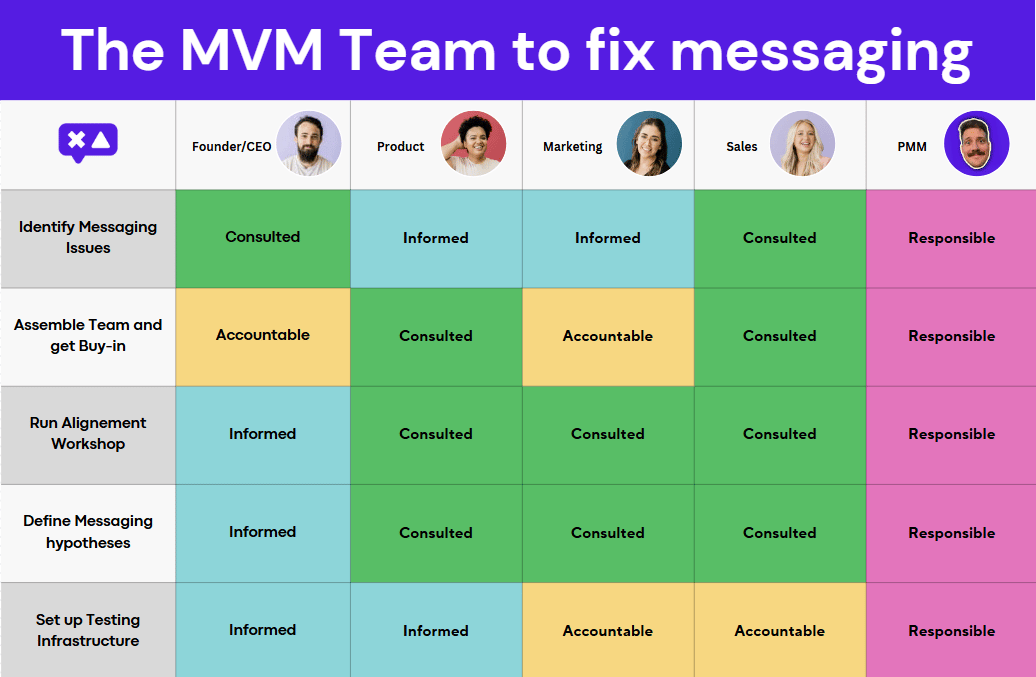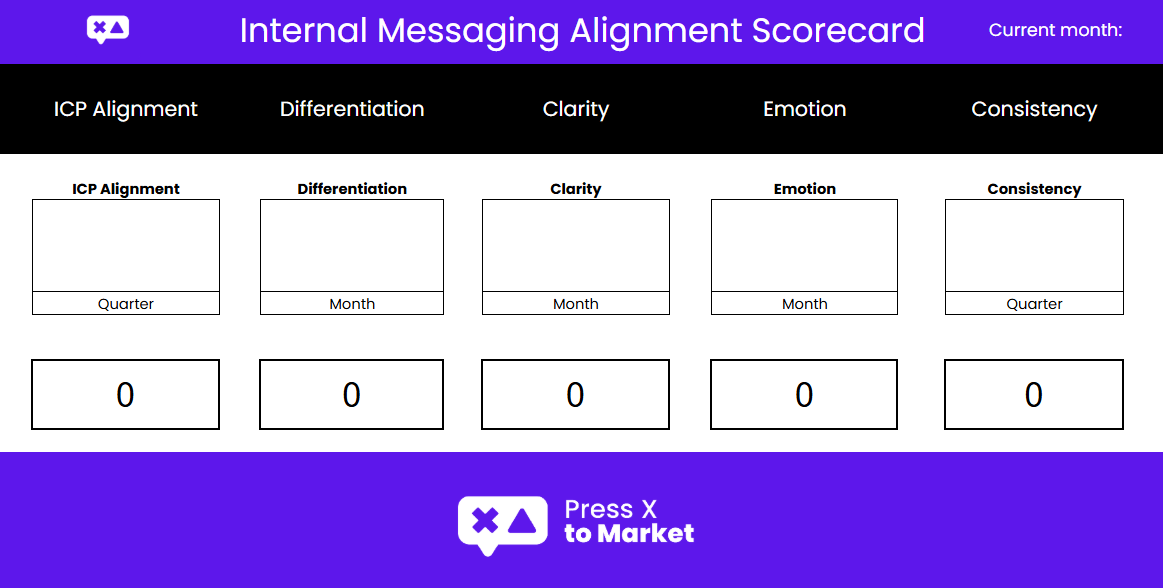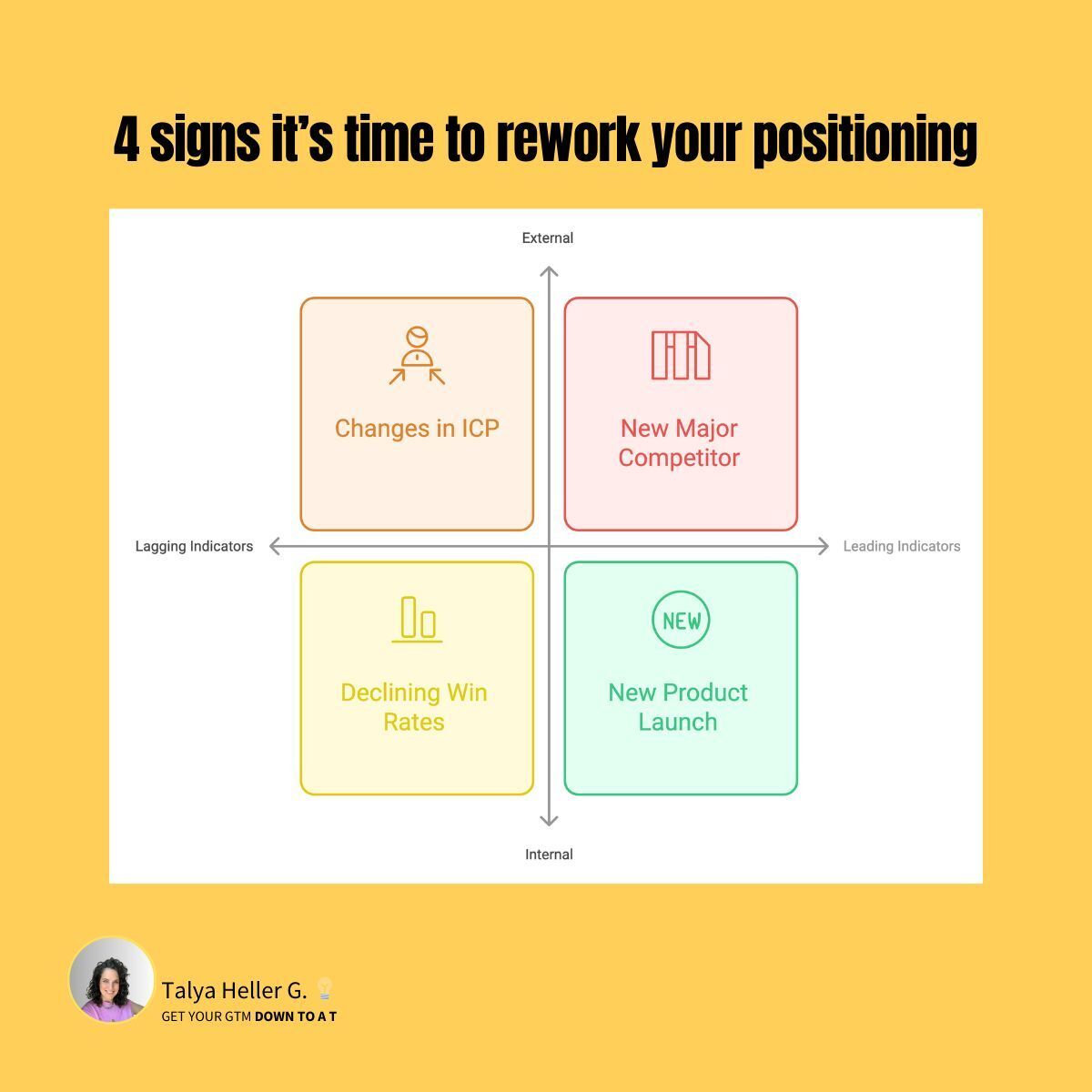- Messaging Sherpa
- Posts
- Don't let your messaging die by committee
Don't let your messaging die by committee
or join 25% of product marketers struggling with this

You’re joining 1,044 other founders and marketers subscribed to this newsletter. Merci! 🙏
—
Messaging is the most important responsibility of product marketers.
But the best version of it is killed by committees 🔪💀
It’s a balance between bringing your positioning to live with unique and relevant information for your target market, but also making sure you’re getting the best inputs from everyone.
But this balance is so tough to master.
I remember the first time I did my first messaging document 5 years ago:
I did everything myself, no one else, with a few calls recorded on Zoom
It was in a beautiful Google Docs, but was seen by two people max (we were 30 employees)
We’ve used it in campaigns, but no one else did
I’m not sure what is worst, messaging getting ignored by everyone like a ghost, or getting torn to shred until you add AI-powered next to it.
To be honest, I would choose the latter, messaging is a team sport, you just have to set the right guardrails.
When everyone is aligned, messaging flows smoothly 🤌
From marketing to sales to product, leading to better conversions and less debates.
Here’s how to make sure your messaging doesn’t die, killed by a committee 👇
Identify if messaging needs improvement
It’s tough to come to your boss and say:
“Yo, let me stop everything that I’m doing to spend 80% of my time on this big project that I can’t do alone and will take tons of resources.”
I mean you CAN but I don’t recommend it 🥲
That’s why starting with a reason why your messaging needs improvement is better.
And many messaging problems are actually positioning problems going unnoticed. Basically signs you should rework your positioning = signs you should rework your messaging
And I know most of product marketers know when their messaging is struggling, but sometimes we can’t really do much.
It’s like me driving a 2012 Subaru, I know the Check Engine light is on, I just CHOOSE to ignore it and crank the volume up 🔊
A test I like to do (or asking the sales team to do) is to ask this simple question:
“In what category would you put our product?”
Trust me, it can be a strong signal to tell management that your messaging isn’t resonating.
I’m talking more about this on the On Messaging Podcast.
Other ways can also be:
Sales Objections: Are prospects consistently confused about your value?
Low Conversions: Are website or demo rates underperforming?
Once you think your messaging (or positioning, I don’t judge) needs improvements, you can:
Start with an hypothesis
As anyone that is working with data, you need to start with an hypothesis.
Here’s the different elements:
Problem: The core issue affecting the company's growth or conversion rates. This is usually a business challenge that messaging should help solve.
Messaging Gap: The disconnect between how the company positions itself and what the target audience understands or needs.
KPI Movement: A measurable shift in key performance indicators (CTR, conversion rate, reply rate, demo-to-close rate, etc.) due to ineffective or improved messaging.
Action: The strategic step to fix the messaging gap. This could involve testing new messaging angles, repositioning key benefits, or refining ICP communication.
Trigger: The external or internal event that makes solving this problem urgent, such as competitor shifts, low engagement rates, or customer confusion.
“Our {problem} is caused by {messaging gap}, creating {KPI Movement}. To fix this, we should act on {messaging gap} by {action} because of {trigger}.”
An example could be:
Problem: Free trial users are not upgrading to paid plans at the expected rate.
Messaging Gap: The value of automation personalization is not clear to users during onboarding.
KPI Movement: Trial-to-paid conversion rate is stuck at 8% instead of the target 15%.
Action: Revise the onboarding messaging to emphasize real-time automation use cases instead of just listing product features.
Trigger: A competitor (HubSpot) launched a campaign focused on ease of setup, making Active Campaign’s onboarding experience seem complicated in comparison.
"Our low trial-to-paid conversion rate is caused by unclear onboarding messaging, creating an 8% conversion bottleneck. To fix this, we should reposition automation value during onboarding by showcasing real customer workflows, because HubSpot’s campaign has shifted user expectations around ease of setup."
Instead of endless stakeholder debates on who’s right, this hypothesis approach turns messaging into a testable, data-backed strategy.
Since you’ve already started with a signal that you should change your messaging, now you can come up with the hypothesis and present it to your team.
Speaking about the team (see, I’m not saying committee anymore), here’s what you need to know.
Assemble the Minimum Viable Messaging-Team (MVM)
Messaging by committee is a trap, but strategic collaboration ensures buy-in from everyone.
Even if you’re the best in the world at messaging, you can’t win alone ❌
You should 100% define clear roles using the RACI matrix.

What a dream team!
This is what I believe would be a good structure because, the founder/CEO isn’t consulted too much, the PMM is the sole responsible of it, and your collaborating with sales and marketing on the right things.
The goal here, is that this committee will work with you to message test effectively.
This should not be a side project—it should be a dedicated sprint that runs alongside your existing GTM efforts, requiring a lot of focus and alignment.
We want to run a 2-week stress-test of different messaging gaps to catch your ICP attention, and every stakeholder crucial to the buyer journey collaborate together.
Once the roles are well-defined, you can start running the workshop ⚒️
Run a Messaging Alignment workshop
I’ve recycled my MMF Scorecard for a simplified version to align the team.
There’s the different definitions, and you’re asking everyone to score it based on data, evidence, or simply pieces of copy or information laying around.
🪙Golden Rule: No opinions—only real customer interactions.

The scorecard everyone should use
Getting buy-in is not about convincing, it’s about co-creating messaging through structured workshops.
Without clear instructions, everyone interprets the pieces differently. This workshop should take 30-45 minutes.
The different pillars (score out of 5), are available here:
1️⃣ ICP Alignment → Are you adapting your messaging to your ICP, and does it reflect your pipeline?
2️⃣ Differentiation → Are you memorable enough to hold a specific position in your buyer’s mind?
3️⃣ Emotion → Are you triggering your prospect’s emotions by telling a relatable story?
4️⃣ Clarity → Are you speaking your customers' language and helping them instantly understand your solution?
5️⃣ Consistency → Are you showing up often enough for your audience to truly get your value?
Once everyone understand the assignment, you can check the score together
Example: “The biggest issue is clarity (average score: 2.5/5). Prospects don’t fully grasp our value proposition.”
If you cannot be aligned internally on your messaging.
How can you expect your prospects to understand?
Here’s the exact steps on how you can put everything together:
How to run the workshop
Present data signals that messaging needs improvement
Share your messaging hypothesis
Have stakeholders score messaging on ICP fit, differentiation, clarity, emotion, and consistency
Discuss score variations and uncover misalignment
Identify the biggest messaging gap
Set uplift objectives (e.g., improve demo conversion by 15%)
Secure agreement on next steps
Everyone needs to agree before starting the test infrastructure
And making sure the goal is achievable.
E.g. “Simplifying our messaging will increase demo-to-close rates by 20% in the next two weeks.”
That’s only the first phase
Now, you should be able to protect your messaging from dying by committee.
Like this? This is from the Message Testing Starter Pack 🎒my upcoming resource to help product marketers at startups test their messaging.
I’ve covered the phase 1 out of 4. The rest is showing you how to message test effectively.
Visit message-market-fit.com to get it when it’s available (right in your inbox)
Bye bye now 👋
